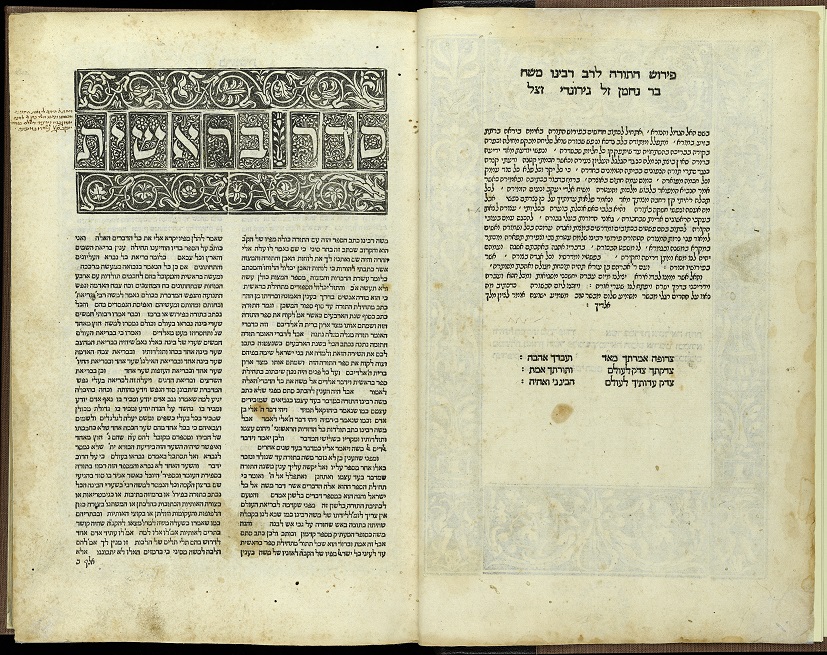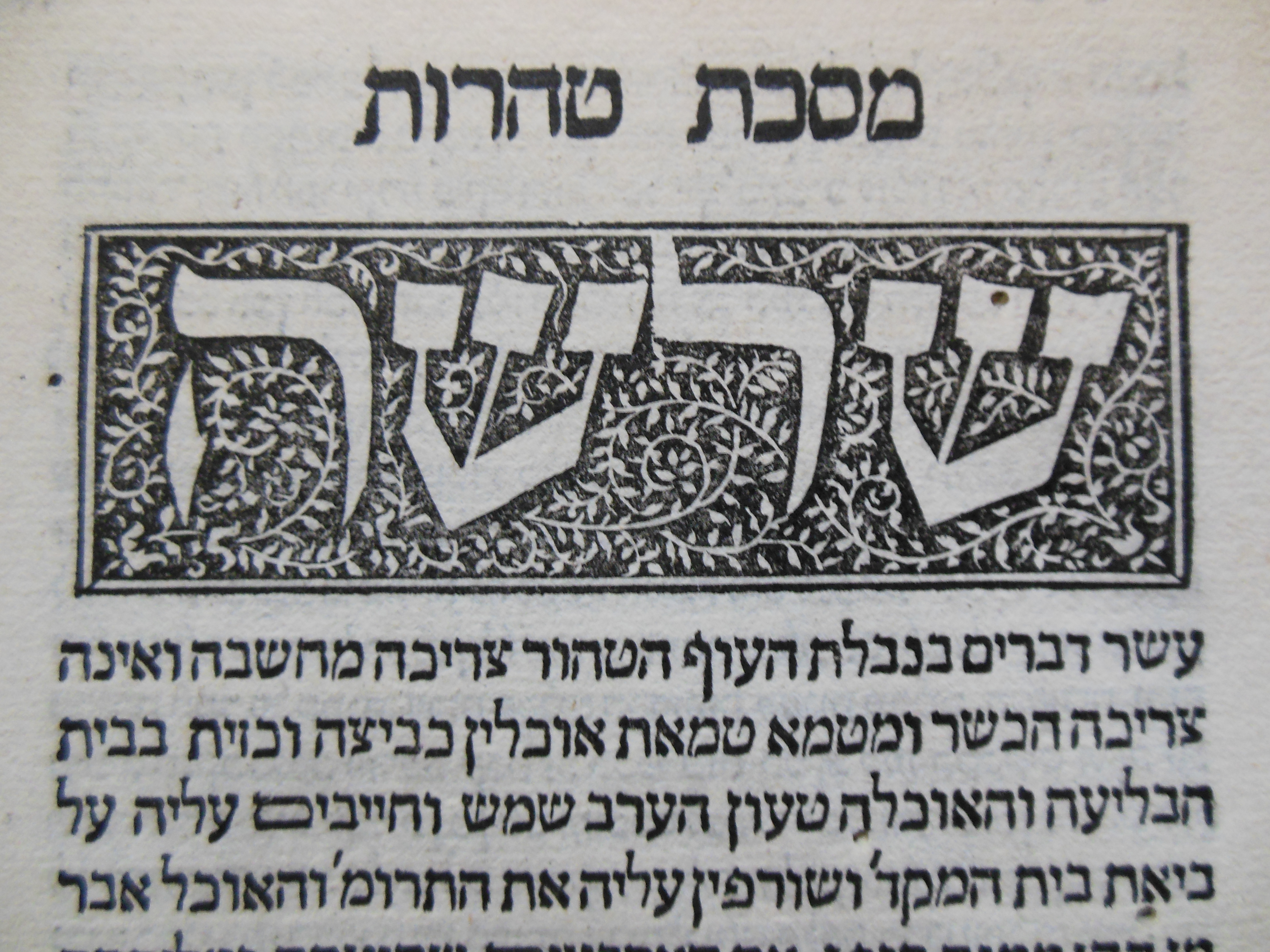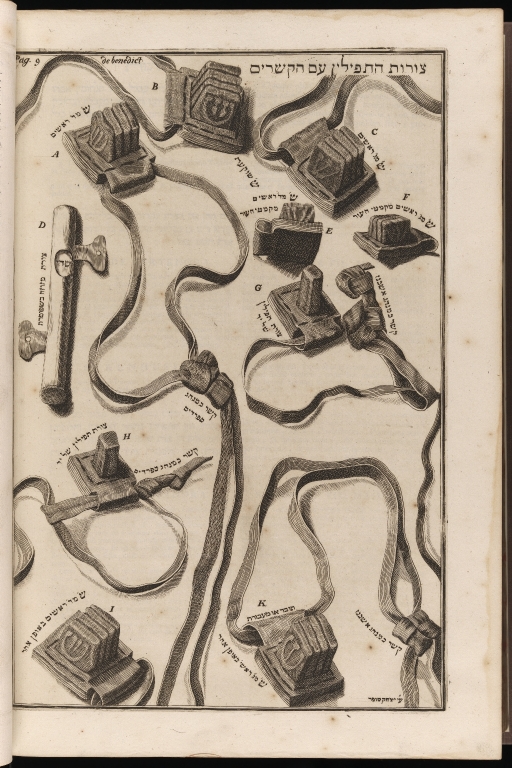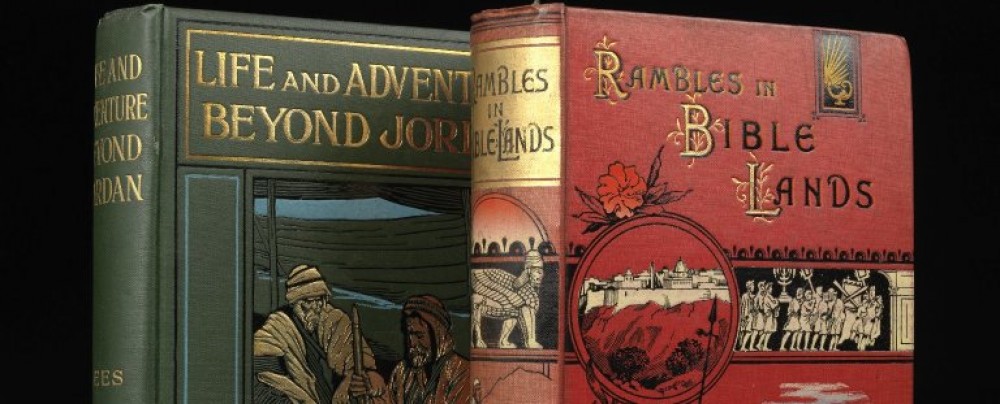This week New College welcomes the British Association for Jewish Studies Conference to Edinburgh. Delegates are welcome to visit New College Library where they’ll find a display of Jewish Studies related items from our Special Collections..
Early Jewish sacred texts, biblical scholarship and devotional works in Hebrew can be discovered throughout New College Library’s Special Collections.

leha-Rav rabenu Mosheh bar Naḥman. Perush ha-Torah. Pisa: Bene Sontsino, 1514. Dal-Chr 15.
Printed in 1514, this commentary on the first five books of the Hebrew bible by Moses Ben Nahman or Nahmanides (1195-1270), a Spanish rabbi and leading Jewish scholar of the mediaeval period. This volume is part of the Dalman-Christie Collection, which was originally transferred to New College Library in 1946 from the Church of Scotland Hospice in Jerusalem. The Dalman Christie Collection also includes the Mikra’ot gedolot. Bomberg Bible] (Venice, 1545) and this 1528 edition of Maimonides’s commentary on the Mishnah.

Image from : Seder Ṭohorot Mishnayot mi-Seder Kodashim im perush / ha-Rambam. Venice : Daniel Bomberg, 1528. New College Library Dal-Chr 58
The study of Biblical languages to allow first hand engagement with scriptural texts has always been a feature of the New College curriculum. This is reflected in the Hebrew Collection, which contains dictionaries, language primers and textual commentaries from the seventeenth to the twentieth centuries. This edition of Reuchlin’s Hebrew Grammar, a Reformation scholar’s attempt to provide a tool to unlock the grammatical and exegetical tradition of the Hebrew Bible, was published in 1537.

Reuchlin, Johannes. Lexicon Hebreaicum & in Hebraeorum grammaticum commentarii. Basilieae, 1537. X13.a6
New College Library’s collection also contain evidence of the Christian world’s attempt to understand Jewish communities, and of Jewish communities’ place within that world.

Mischna, sive, Totius Hebraeorum juris : rituum, antiquitatum, ac legum oralium systema. Amsterdam : Gerardus & Jacobus Borstius, 1698. New College Library Dal-Chr 45
This image of phylacteries is taken from a six volume seventeenth century set of the Mishnah, which has text in Hebrew and Latin. It also contains commentaries of Maimonides and Bertinoro in Latin. New College Library holds copies in both the Dalman-Christie and the Longforgan Collections.

Maḥzor ḥeleḳ rishon [1699] New College Library Dal-Chr 14
Christine Love-Rodgers
Academic Support Librarian – Divinity
